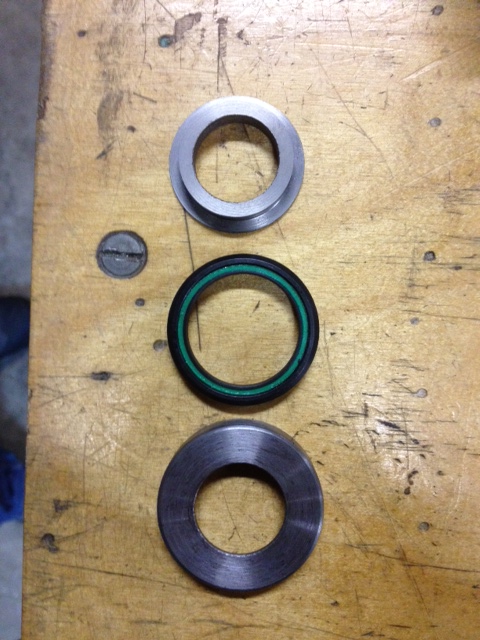Jason Krause
Active Member
We were curious about the possible benefits of a Ball Bearing Tail Yoke as compared to the standard bushing type that come stock with tail the dragger RV’s. After building a few samples and doing some initial testing, the results are quite impressive.
We have determined the ball/needle bearings have made the tail wheel much easier to steer and completely eliminated the hysteresis or “stickiness” caused by the normal bushing friction. There also doesn’t seem to be any indication of “shimmy."
Currently we are testing the yoke to see how it performs in harsh conditions. Primarily, making certain the bearings can handle the loads and conditions. i.e. large cracks commonly found in taxi and runways, moisture and fine dirt/silt from unimproved surfaces. Additionally, some less than ideal landings are being performed to further abuse the complete assembly.
Edit: Check out this video http://www.youtube.com/watch?v=vOjhB2AX1YY
We would love to get some feedback from all you tail dragger drivers about this possible upgrade. If all goes well, we will have the yoke available for sale soon, in our online store. Be sure to visit JD Air Parts at JDair.com for more information and check out our other products.
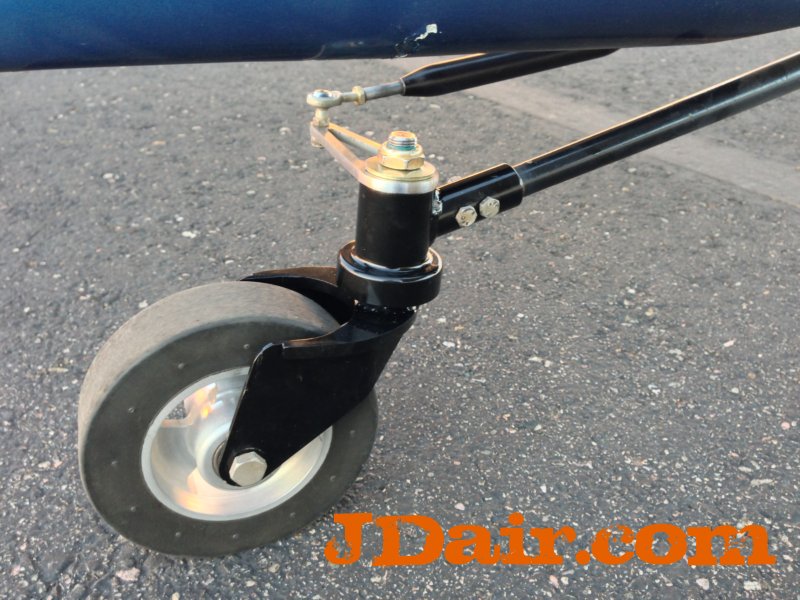
CNC machined and welded from 4130 steel and powder coated gloss black.
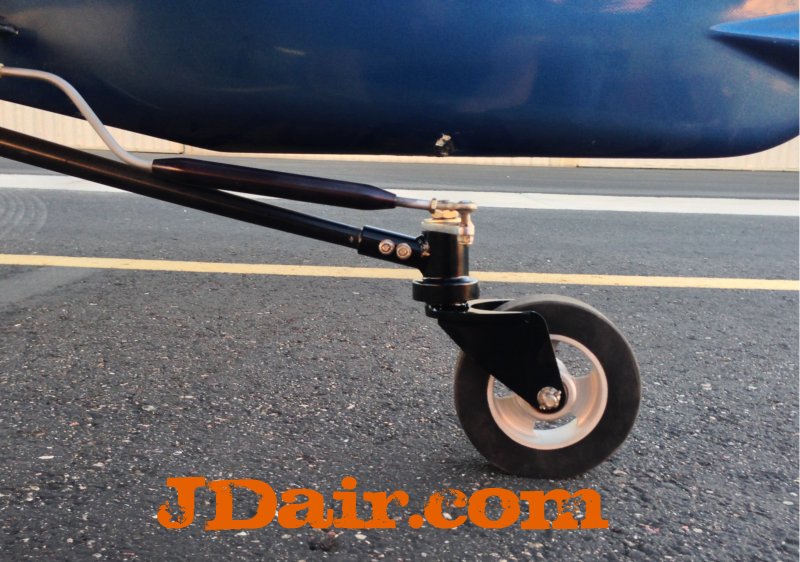
Notice the reduced "squat" angle. As long as shimmy remains at bay this looks much better.
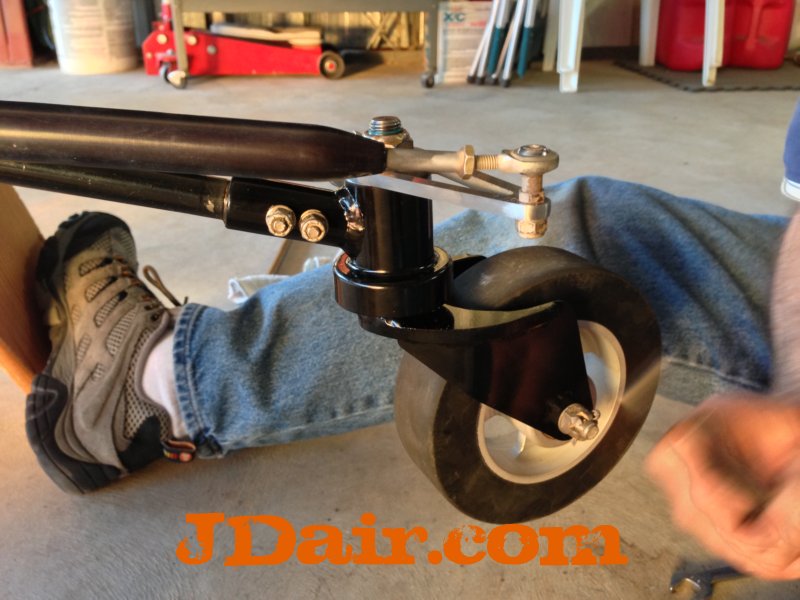
This yoke will work other tailwheel products that are compatible with the 7/8" Van's setup.
However when combined with our Steering Link, Fork, New Control Arm* (*not pictured) and a light weight tail wheel the result is very impressive.
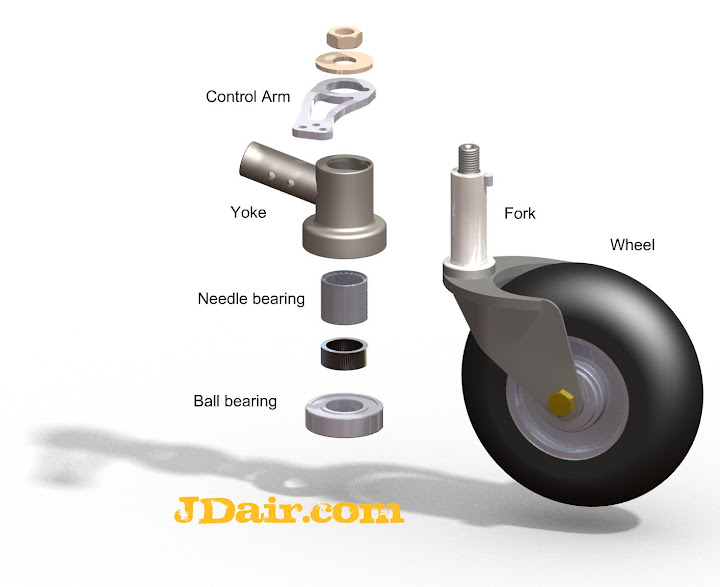
Just a quick exploded CAD rendering for a look inside. The aluminum sleeve is needed so the locking pin slides between the bearings for assembly.
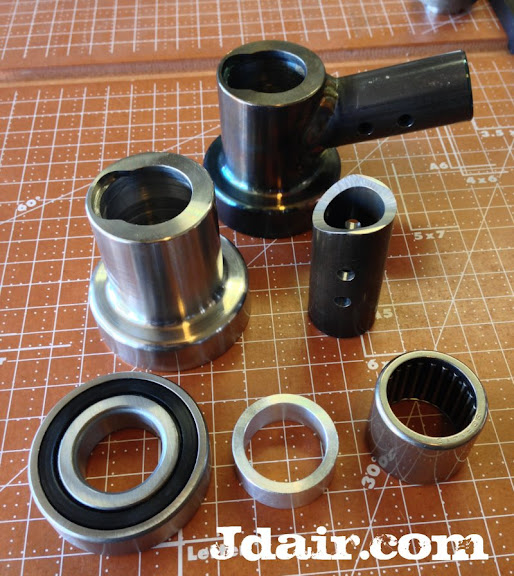
Some of the prototype parts separately here.
We have determined the ball/needle bearings have made the tail wheel much easier to steer and completely eliminated the hysteresis or “stickiness” caused by the normal bushing friction. There also doesn’t seem to be any indication of “shimmy."
Currently we are testing the yoke to see how it performs in harsh conditions. Primarily, making certain the bearings can handle the loads and conditions. i.e. large cracks commonly found in taxi and runways, moisture and fine dirt/silt from unimproved surfaces. Additionally, some less than ideal landings are being performed to further abuse the complete assembly.
Edit: Check out this video http://www.youtube.com/watch?v=vOjhB2AX1YY
We would love to get some feedback from all you tail dragger drivers about this possible upgrade. If all goes well, we will have the yoke available for sale soon, in our online store. Be sure to visit JD Air Parts at JDair.com for more information and check out our other products.
CNC machined and welded from 4130 steel and powder coated gloss black.
Notice the reduced "squat" angle. As long as shimmy remains at bay this looks much better.
This yoke will work other tailwheel products that are compatible with the 7/8" Van's setup.
However when combined with our Steering Link, Fork, New Control Arm* (*not pictured) and a light weight tail wheel the result is very impressive.

Just a quick exploded CAD rendering for a look inside. The aluminum sleeve is needed so the locking pin slides between the bearings for assembly.
Some of the prototype parts separately here.
Last edited:



